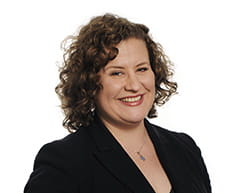The questions keep on coming, which is hardly surprising given that the guidance keeps being amended! When we last updated you, the Treasury had issued a Direction to HMRC; for those of you unfamiliar with this this is the law upon which the Coronavirus Job Retention Scheme (CJRS) is based. Since then the government has updated its guidance (for the seventh time) on the CJRS. There have also been amendments to the position surrounding statutory sick pay and Covid-19. Add to all this, the unveiling of the CJRS claims portal last Monday and, all in all, the time feels ripe for another bulletin on the topic!
Do you have to get the agreement of employees before putting them on furlough?
The Direction indicates that an employee is only furloughed for the purposes of the CJRS if both the employer and the employee have agreed the employee's cessation of work in writing. This conflicts with the government guidance, which was revised after the Direction was issued. The guidance states that consent will be valid if "done in a way consistent with employment law". It then states that there needs to be a written record, but that the employee does not have to provide a written response.
HMRC has stated that it will follow the guidance when it comes to the need for agreement to furloughing which is a welcome relief for employers but does make us lawyers feel slightly uneasy that the law (the Direction) says something different! Caution should be exercised if pay, pension contributions, or other contractual terms are being reduced (i.e. the employer is not topping up the remaining 20%). In these circumstances it is advisable to get the employee's written agreement.
Can someone who is off on furlough leave take holiday?
You may well recognise this question from our last bulletin! At the time of writing that we only had the Acas guidance on holidays (which has no statutory force) to go on, and concluded with the hope that the position on holidays would be clarified as a matter of urgency.
Guidance on holidays and their treatment during furlough has now been published in the revised employee guidance on the CJRS, as well as in the new guidance addressing the method of calculating 80% of an employee's wages. These two pieces of guidance confirm that those who are furloughed can still request and take their holiday in the usual way. They are entitled to their full holiday pay, so for those employers who are not paying 100% you will have to top up.
What is the position when it comes to the employer insisting that an employee takes some annual leave whilst they are on furlough? This would prevent the problem of employees accruing large amounts of holiday then wanting to take it at the same time as everyone else when things finally return to "normal". There is nothing specific covering this in the guidance (though the Acas guidance does say that employers should encourage employees to take annual leave), and there are conflicting views out there. We think it's acceptable to ask employees to take a proportionate amount of annual leave during their furlough leave to avoid too much accrual. However, this is subject to any further changes to the government guidance clarifying the position.
Are shielding employees entitled to statutory sick pay?
Yes, they are. As of 16 April the snappily entitled Statutory Sick Pay (General) (Coronavirus Amendment) (No.3) Regulations 2020 came into force. These provide that a person will be deemed incapable of work for the purposes of entitlement to statutory sick pay (SSP) where they are "shielding" in accordance with a notification sent to them under public health guidance and are therefore unable to work.
Can you furlough someone who is in receipt of SSP?
This has become less clear. The government guidance states that you can furlough those who are off sick, but that the employee should no longer receive sick pay while they are furloughed. Meanwhile the Direction states that an employee in receipt of or eligible to receive SSP will not be eligible for furloughing until the period of SSP has come to an end.
It may well be that there is a drafting error in the HMRC Direction which will be rectified in the coming days, but until this happens there is a risk that employers will be unable to claim a grant under the CJRS for those employees off sick and entitled to SSP who have been furloughed. Once we have clarification on the issue we will let you know.
How is pay for family-related leave calculated for furloughed workers?
The government announced on Friday (24 April) that pay for furloughed workers taking family-related leave will be calculated based on usual earnings rather than furlough pay. This means that furloughed workers planning to take paid parental or adoption leave will be entitled to pay based on their usual earnings rather than on the furloughed pay rate.
Payment of full earnings will apply to Maternity Pay, Paternity Pay, Shared Parental Pay, Parental Bereavement and Adoption Pay, and will apply to those whose period of family-related pay begins on or after 25 April.
The CJRS claims portal opens amidst a raft of new guidance
The CJRS claims portal opened last Monday (20 April). According to press reports more than 140,000 employers applied for grants under the scheme within the first eight hours of the portal going live. Employers are due to receive their funds within six working days of their application.
It seems that the launch of the portal was not without its teething problems, with reports, amongst other things, of the website crashing, an incorrect reference to a Real Time Information cut-off date of 16 March, rather than 19 March (which has now been corrected) and an online calculator returning incorrect results.
Meanwhile HMRC has published various pieces of guidance to help employers navigate the scheme - 'Claim for your employees' wages though the coronavirus job retention scheme: A step by step guide for employers', as well as guidance on how to work out 80% of employees' wages in order to claim the right amounts under the CJRS scheme.
A briefer guidance on how to claim for wages through the CJRS has also been published which covers what an employer will need to make a claim, how to make a claim, and what happens after you've claimed. It has also put together a YouTube webinar on the CJRS which covers eligibility for furloughing, the rules of the scheme, how much can be claimed and how to claim.

